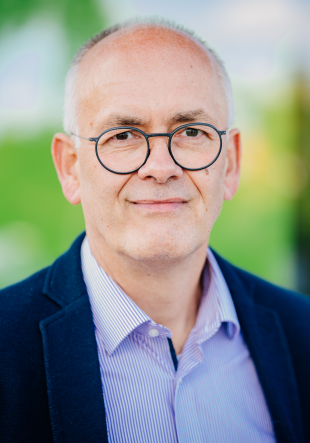Researchers from Paderborn University, the Istituto Nazionale di Ricerca Metrologica (INRiM),Italy’s national metrology institute, the Politecnico di Torino, Italy, and the Physikalisch-Technische Bundesanstalt (PTB), National Metrology Institute of Germany, have studied sequential infiltration synthesis in nanostructured polymers. They hope to improve the possibilities for characterizing material properties at the smallest length scale. Materials with structures in the range of just a few nanometers will be essential, for instance, in future computer chips, energy conversion and energy storage processes, and molecular sieves. The researchers have now published their findings as a cover article in “ACS Applied Polymer Materials.”
At Paderborn, the team led by physicist Prof. Jörg Lindner works with nanostructured block copolymers, interlinked polymer chains that “self-organize” into regular patterns, allowing for a wide range of applications. “Our ability to control the self-organization of block copolymers has made rapid progress in recent years,” says Lindner. In order to continue this development, though, nondestructive methods for characterizing material properties must be expanded, as the goal of a larger endeavour involving the co-authors of partner institutions, INRiM, Politecnico di Torino and PTB.
Block copolymers allow extremely small structures to be created on semiconductor surfaces, which facilitates future-oriented processes for further miniaturizing next-generation microelectronic components. “The structure sizes that can be achieved here are limited only by the length of the polymer chains, so they can be even smaller than the structures that are laboriously produced through conventional techniques. The advances in miniaturization also create a need for new measurement methods and size standards so that smaller structures can be analyzed. Block copolymers can help here, too – but only after the chemical differences between the involved polymer types are increased by selectively modifying one of the polymers. Selectively integrating aluminum oxide using sequential infiltration synthesis makes it possible to create nanostructures that can be used to test these new measurement processes,” explains Lindner.
Link to the study: https://pubs.acs.org/doi/10.1021/acsapm.2c02094.
Part of this research was funded by the projects 16ENV07 AEROMET and 19ENV08 AEROMET II. These projects have received funding from the EMPIR program co-financed by the Participating States and from the European Unions Horizon 2020 research and innovation program.


